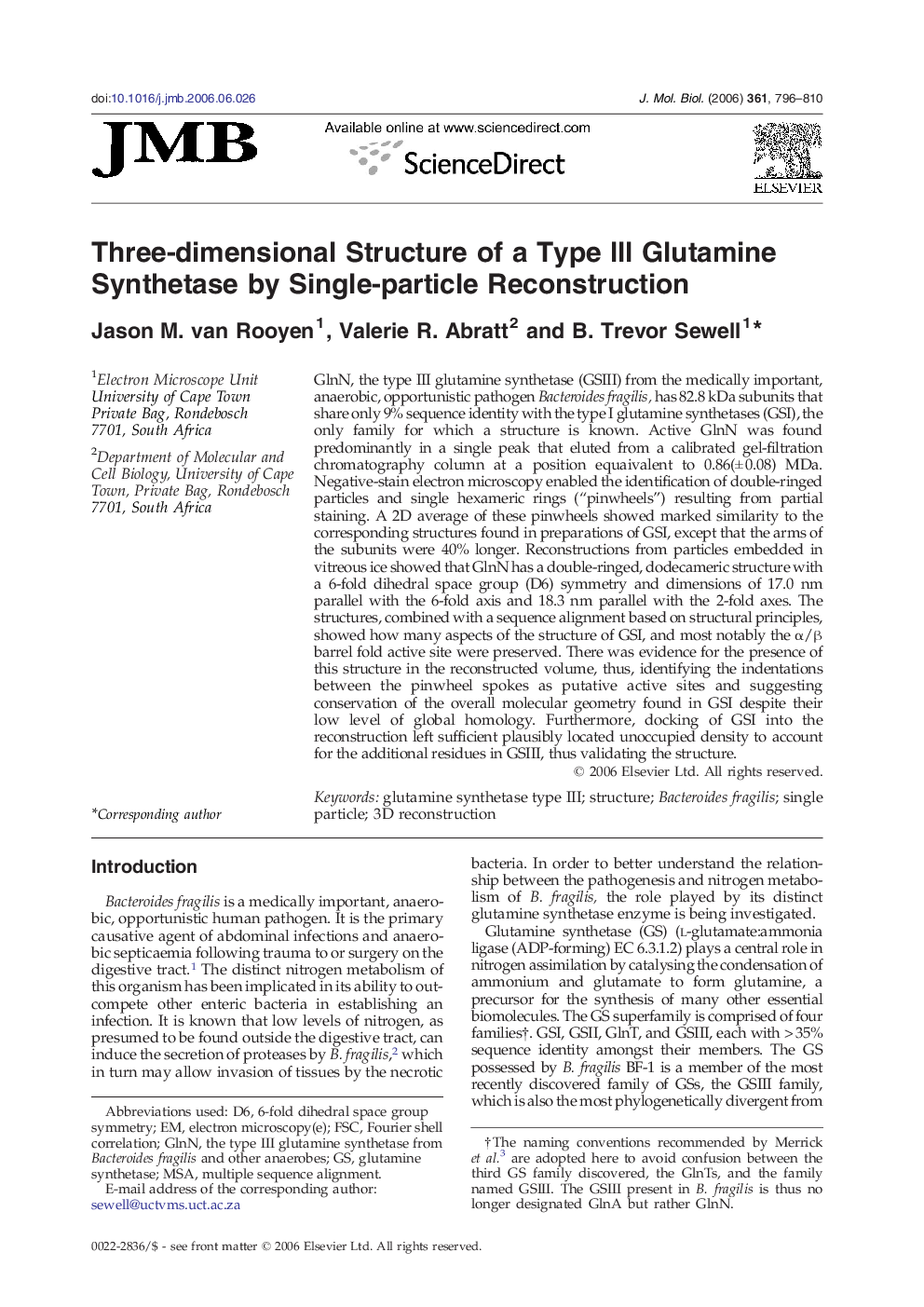| Article ID | Journal | Published Year | Pages | File Type |
|---|---|---|---|---|
| 2189174 | Journal of Molecular Biology | 2006 | 15 Pages |
GlnN, the type III glutamine synthetase (GSIII) from the medically important, anaerobic, opportunistic pathogen Bacteroides fragilis, has 82.8 kDa subunits that share only 9% sequence identity with the type I glutamine synthetases (GSI), the only family for which a structure is known. Active GlnN was found predominantly in a single peak that eluted from a calibrated gel-filtration chromatography column at a position equaivalent to 0.86(± 0.08) MDa. Negative-stain electron microscopy enabled the identification of double-ringed particles and single hexameric rings (“pinwheels”) resulting from partial staining. A 2D average of these pinwheels showed marked similarity to the corresponding structures found in preparations of GSI, except that the arms of the subunits were 40% longer. Reconstructions from particles embedded in vitreous ice showed that GlnN has a double-ringed, dodecameric structure with a 6-fold dihedral space group (D6) symmetry and dimensions of 17.0 nm parallel with the 6-fold axis and 18.3 nm parallel with the 2-fold axes. The structures, combined with a sequence alignment based on structural principles, showed how many aspects of the structure of GSI, and most notably the α/β barrel fold active site were preserved. There was evidence for the presence of this structure in the reconstructed volume, thus, identifying the indentations between the pinwheel spokes as putative active sites and suggesting conservation of the overall molecular geometry found in GSI despite their low level of global homology. Furthermore, docking of GSI into the reconstruction left sufficient plausibly located unoccupied density to account for the additional residues in GSIII, thus validating the structure.
